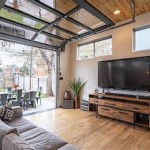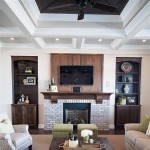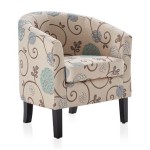How to Divide Dining Room From Living Room
A seamless transition between a living room and dining room can create a spacious and welcoming atmosphere. However, defining a clear separation between these two areas can enhance functionality and visual appeal, making each space feel more distinct and purposeful. This article explores various techniques and considerations for effectively dividing dining rooms from living rooms, enabling you to optimize both areas for their intended uses.
1. Utilizing Furniture for Separation
Furniture plays a crucial role in defining spaces within an open floor plan. strategically placed furniture can create a natural divide between the dining room and living room.
a. Placement of the Dining Table
The dining table itself serves as a primary divider, establishing the boundary between the two spaces. Consider placing the table perpendicular to the living room, forming a visual barrier while maintaining an open flow. You can also incorporate a large area rug beneath the dining table to further anchor the space and create a distinct zone.
b. Use of Bookshelves or Cabinets
Bookshelves or cabinets with open shelving can act as effective dividers, offering storage options while also separating the spaces. Position them parallel to the dining room, creating a visual wall that can be used for displaying decorative items, books, or plants. The openness of the shelving allows for a sense of flow, while still providing a clear distinction between the areas.
c. Placement of a Sofa or Armchairs
A strategically placed sofa or armchairs can create a distinct living room area while allowing the dining room to remain separate. You can position the sofa perpendicular to the dining table, creating a visual barrier between the two spaces. This arrangement creates a sense of privacy and intimacy for the living room, while still maintaining a sense of openness within the overall space.
2. Architectural Elements for Division
Architectural elements offer a more permanent and structural approach to dividing dining rooms from living rooms. These options create clear visual boundaries and can enhance the overall design aesthetic of the space.
a. Use of a Room Divider
Room dividers offer a versatile and flexible solution for defining spaces. They can be made from various materials, including wood, metal, or fabric, and come in various styles. A room divider can be positioned strategically to create a visual barrier between the dining room and living room, while still allowing for a sense of openness. The right room divider can add a touch of elegance and sophistication to the space.
b. Creating a False Wall
A false wall is a structural addition that can be used to partially or fully divide the dining room from the living room. A false wall can be constructed with drywall, wood paneling, or other materials. It can provide a sense of separation and privacy, and can also be used to incorporate built-in shelving or storage solutions. While a false wall is a more permanent solution, it offers a versatile way to define the spaces and add architectural interest.
c. Archways
Archways create a sense of flow and continuity between the dining room and living room, while still offering a subtle visual separation. An arched opening can add a touch of elegance and grandeur to the space, and can be used to create a focal point or a visual connection between the two areas.
3. Decorative Enhancements for Division
Decorative elements provide a refined and stylish approach to dividing dining rooms from living rooms. These options can enhance the overall visual appeal of the space and create a sense of cohesion.
a. Different Flooring Materials
Choosing distinct flooring materials for the dining room and living room can visually separate the spaces. This strategy can emphasize the different functions of each zone and create a sense of visual interest. For example, using hardwood flooring in the dining room and carpet in the living room can effectively define the areas and create a harmonious balance.
b. Varying Paint Colors
Choosing different paint colors for the dining room and living room can create a visual distinction between the spaces. This approach can enhance the overall design aesthetic of the room and create a cohesive feel. For example, using a neutral color in the dining room and a bolder color in the living room can create a sense of contrast and visual appeal.
c. Strategic Lighting
Lighting plays a crucial role in setting the mood and defining spaces. Using different lighting fixtures for the dining room and living room can create a sense of separation and enhance the overall ambiance. Consider using pendant lights over the dining table and recessed lighting in the living room to create distinct illumination zones. This strategy can add a touch of elegance and functionality to the space.

8 Tips On How To Separate Living And Dining Areas

How To Divide A Living Room And Dining Combo Easily

8 Tips On How To Separate Living And Dining Areas

How To Divide A Living Room Dining 7 Smart Simple Ways Frwd By Cuura Space

How To Make A Living Dining Room Feel Like Separate Spaces Furniture Choice

How To Make A Living Dining Room Feel Like Separate Spaces Furniture Choice

How To Separate Living Dining Room Layouts

How To Tips And Advice Archives
.jpg?strip=all)
Beautiful Partition Designs For Living Room And Dining Hall

8 Tips On How To Separate Living And Dining Areas








